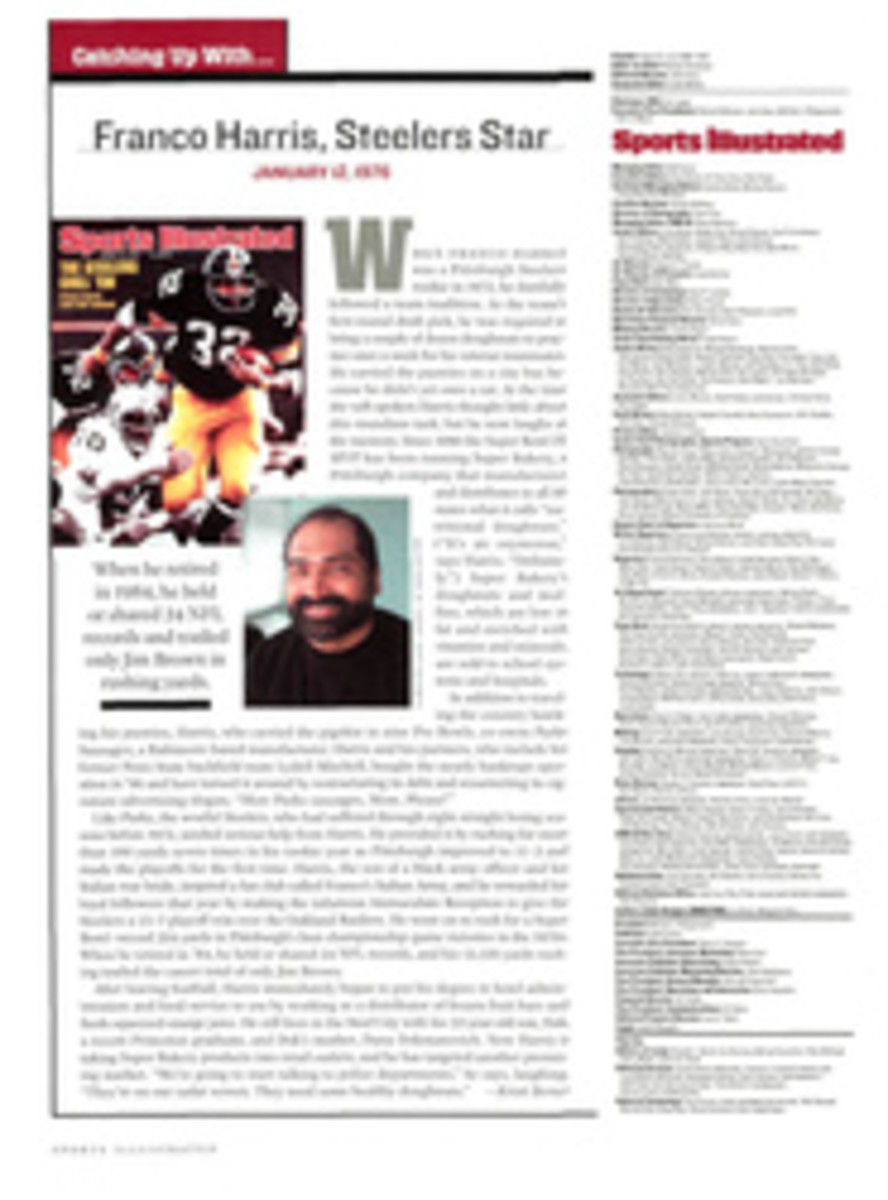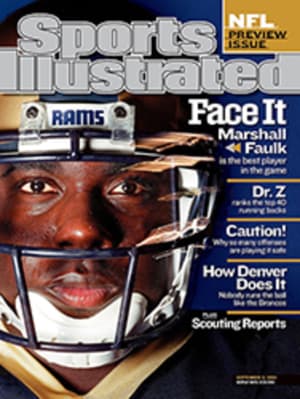
Putting a Premium on Playing With big bucks at stake, pro sports teams look to insurance to cover their assets
When a degenerative hip condition ended Albert Belle's career
last spring, the Baltimore Orioles were left to fill a major
void. The franchise lost a .295 career hitter who'd averaged 37
home runs per season over the past decade, yet there was a
silver lining: The team had purchased disability insurance on
70% of Belle's five-year, $65 million contract. With three years
remaining, Belle was still owed $39 million when he retired.
Today, Cigna, the team's carrier, is paying roughly $24 million
of that amount. "There's a reason that [team owner] Peter
Angelos is a successful businessman," says John Scotti, the
Pittsburgh-based insurance broker who sold the Orioles their
policy. "He knows how to spread risk."
As athletes' contracts grow at the rate of Jack's beanstalk,
teams are seeking ways to protect their investments. Franchises
in the four major sports leagues spend more than $100 million a
year insuring the contracts of choice players. Some teams take
what's known as a "Len Bias policy" and insure a draft pick as
soon as he is signed.
The cost of premiums, however, has risen even faster than
salaries. Since last December athlete-disability policies have
doubled in price. The increase stems in part from recent losses
insurers have incurred as a result of big sports claims such as
Belle's and the one the New Jersey Nets filed after forward
Jayson Williams had to retire because of a broken right tibia and
kneecap. It also reflects losses that re-insurers like Lloyd's of
London have suffered in other areas. "I'm going back to teams
having to explain, 'I know we did this deal a year ago for half
the price,'" says Marc Blumencranz, chief operating officer of
BWD Group LLC, a Jericho, N.Y.-based firm with a large sports
division. "But they're renewing anyway."
Insurance varies greatly among sports. NFL players get whopping
signing bonuses, but their salaries are not guaranteed. Thus, few
franchises buy disability insurance; the players do so
individually. NHL and NBA teams are governed by league-wide
insurance programs. In the NHL teams must insure their five
highest-paid players, at a rate of 2.75% of their annual
salaries. In the NBA the six top-paid players on each squad need
to be insured, at 3.9%. Many NHL and NBA teams cover other
players as well. "I insured every player with a guaranteed
contract," says Ray Schaetzle, former vice president of finance
for the Nets. "It's like any other business protecting its
assets."
In baseball, which has no league-wide policy, some teams, such as
the Cleveland Indians, are risk-averse and spend millions
insuring players. Others, like the Seattle Mariners, have no
player insurance. The rationale for Seattle? No Mariner has a
huge guaranteed contract, and the team's balanced roster and the
lure of Safeco Field guarantee that the turnstiles will click
regardless of which players get injured.
Some teams with one highly paid star will insure only that
player. For the last few years, for instance, the San Francisco
Giants had a policy only on Barry Bonds. "It's gotten so
expensive," says owner Peter Magowan. "We looked at insuring more
guys, but it wasn't worth it." (The Giants didn't renew the
policy this season because Bonds is in the final year of his
contract, and the deductible exceeds the salary he is owed.)
Some clubs treat their minor league players as de facto
insurance policies. Scotti points out, for instance, that with
third base prospect Sean Burroughs in Triple A, the San Diego
Padres did not take out insurance on incumbent Phil Nevin, whose
contract pays him $2.5 million this year. If Nevin were injured
and the Padres had to eat the remainder of his salary, Burroughs
could step in as an inexpensive replacement.
While the price of an individual policy can be
astronomical--particularly one for a pitcher, which can cost a
team three times as much as a policy for a position player--most
players are insurable. "I don't do exclusions, such as, 'I'll
cover everything but his left elbow,'" says Scotti. "Advances in
medicine and rehab are such that even a guy with Tommy John
surgery is worth insuring for the right price." Other brokers
point out that while paying off a claim such as Belle's can be
devastating, athletes are good bets to stay healthy. They're
young, fit and usually nonsmokers.
Most important, perhaps, in sports there is little risk that
insured employees will fake or prolong injuries to avoid
working. "Guys like [Pittsburgh Pirates catcher] Jason Kendall
and [Texas Rangers outfielder] Rusty Greer are an insurer's
dream," says Scotti. Last season Kendall played with a fractured
cheek, and Greer bounced back repeatedly from several injuries.
Says Scottie, "You see how miserable they are when they don't
play."
COLOR PHOTO: HEINZ KLUETMEIER Belle was owed $39 million when a hip condition forced himto retire.

